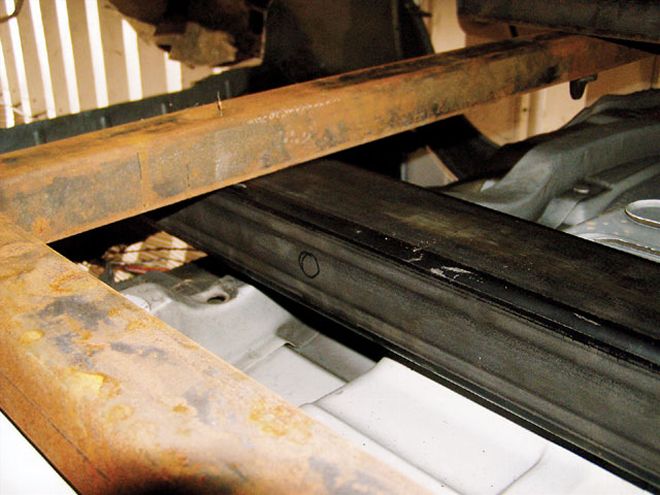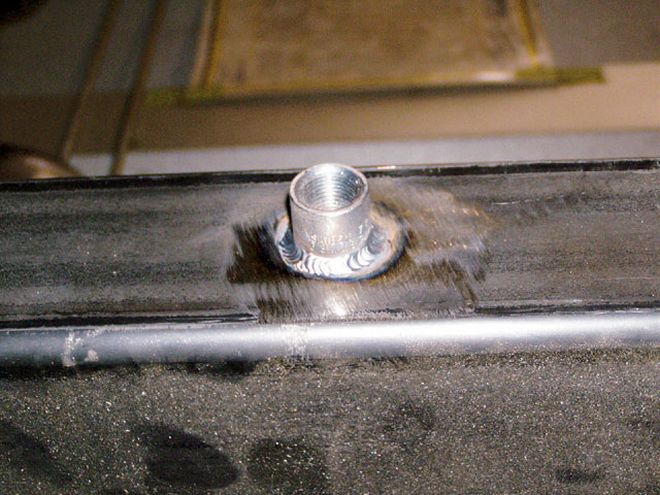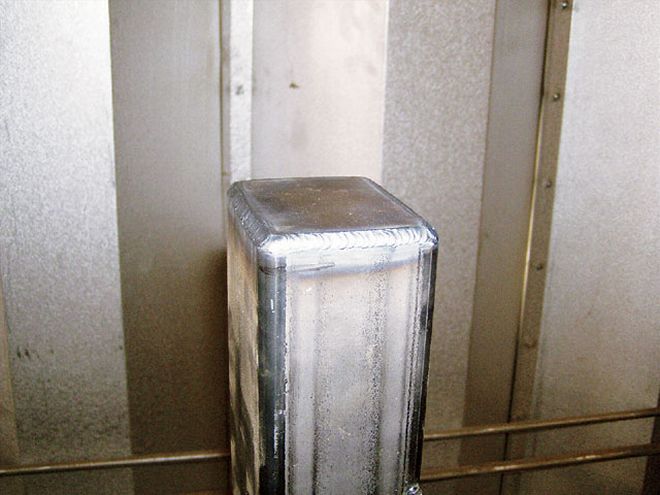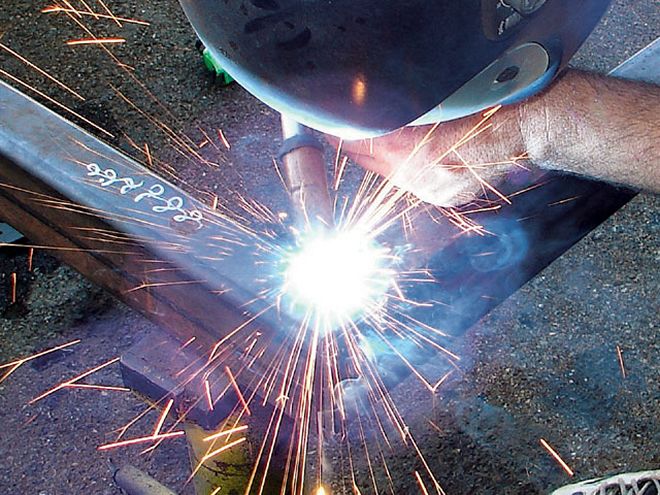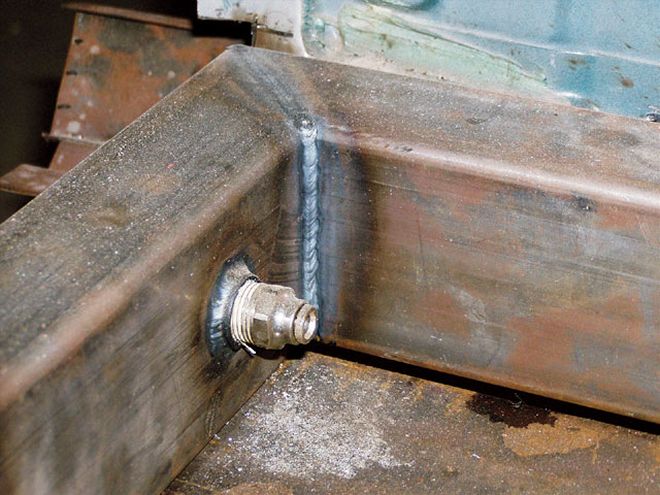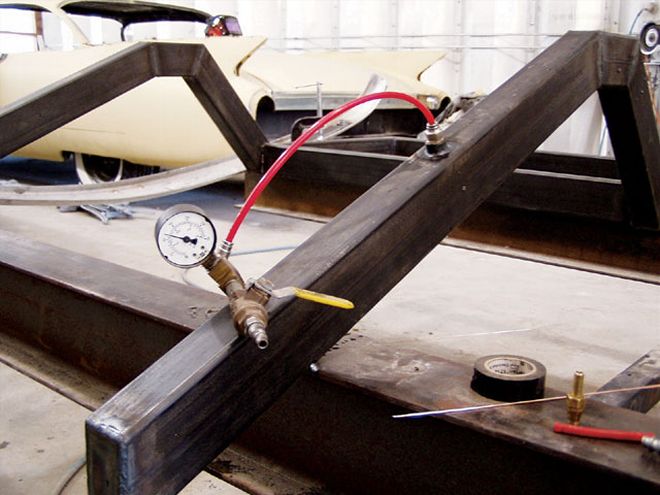Building An Air Tank Frame - Tech
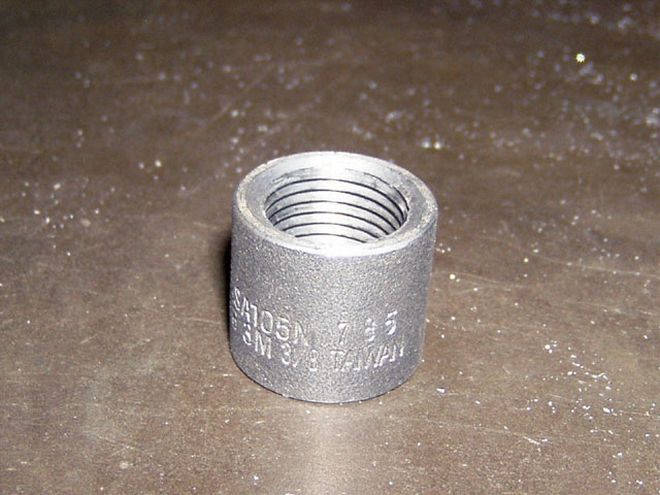
| First thing's first: you need to pick up a few 3/8-inch bungs.
If you're building a back half for your truck, why not put the new-found real estate to use? The time it will take you to do this will probably be less than the time you will spend trying to figure out where to put the two-or more-round air tanks. And besides, it's a really cool conversation piece when you're at a dinner party or your next family gathering. Trust us, your mom will be so proud.
The only real concern you'll have when building an air tank into your frame is using material that is thick enough to not pucker out with 200 psi (pounds per square inch) pushing against it. Have you ever noticed that there aren't very many air tanks with any flat sides? That's because the pressure wants to curve the material. Think about a balloon. Balloons can be made long or narrow, but by no stretch are you going to see a square one, no matter what the balloon looked like deflated. So, use material that is at least .120 wall, (1/8-inch thick) which is the very least you should be using to start with.
Now, other than making sure the welds don't leak, capping the ends of the tank and welding in some threaded bungs-there's not much difference from building any other frame. The trick is welding hot and consistently-and definitely don't stitch weld. When the tank is finished, test the welds by filling the frame with air and using soap and water to check for leaks. If you find a pin hole, use a drill bit to remove some material and weld it back up. It would also be a good idea to make sure that that the tank doesn't touch the ground if you plan on draggin' your ride.
Most back-halves will net you about 5 gallons of air. To do a quick calculation, you can multiply the frame material height by the width, then by the length of material you will be using in inches, and then divide it by 216. That will give you a round-about figure to use. Some people ask about coating the inside of the frame, but as long as you use a water trap to be safe, the little moisture that develops over time is hardly enough to do any damage.
Follow along to see just how easy it is to save some space! For more information, contact the company listed in the source box.
 | First thing's first: you need to pick up a few 3/8-inch bungs.
If you're building a back half for your truck, why not put the new-found real estate to use? The time it will take you to do this will probably be less than the time you will spend trying to figure out where to put the two-or more-round air tanks. And besides, it's a really cool conversation piece when you're at a dinner party or your next family gathering. Trust us, your mom will be so proud.
The only real concern you'll have when building an air tank into your frame is using material that is thick enough to not pucker out with 200 psi (pounds per square inch) pushing against it. Have you ever noticed that there aren't very many air tanks with any flat sides? That's because the pressure wants to curve the material. Think about a balloon. Balloons can be made long or narrow, but by no stretch are you going to see a square one, no matter what the balloon looked like deflated. So, use material that is at least .120 wall, (1/8-inch thick) which is the very least you should be using to start with.
Now, other than making sure the welds don't leak, capping the ends of the tank and welding in some threaded bungs-there's not much difference from building any other frame. The trick is welding hot and consistently-and definitely don't stitch weld. When the tank is finished, test the welds by filling the frame with air and using soap and water to check for leaks. If you find a pin hole, use a drill bit to remove some material and weld it back up. It would also be a good idea to make sure that that the tank doesn't touch the ground if you plan on draggin' your ride.
Most back-halves will net you about 5 gallons of air. To do a quick calculation, you can multiply the frame material height by the width, then by the length of material you will be using in inches, and then divide it by 216. That will give you a round-about figure to use. Some people ask about coating the inside of the frame, but as long as you use a water trap to be safe, the little moisture that develops over time is hardly enough to do any damage.
Follow along to see just how easy it is to save some space! For more information, contact the company listed in the source box.
| First thing's first: you need to pick up a few 3/8-inch bungs.
If you're building a back half for your truck, why not put the new-found real estate to use? The time it will take you to do this will probably be less than the time you will spend trying to figure out where to put the two-or more-round air tanks. And besides, it's a really cool conversation piece when you're at a dinner party or your next family gathering. Trust us, your mom will be so proud.
The only real concern you'll have when building an air tank into your frame is using material that is thick enough to not pucker out with 200 psi (pounds per square inch) pushing against it. Have you ever noticed that there aren't very many air tanks with any flat sides? That's because the pressure wants to curve the material. Think about a balloon. Balloons can be made long or narrow, but by no stretch are you going to see a square one, no matter what the balloon looked like deflated. So, use material that is at least .120 wall, (1/8-inch thick) which is the very least you should be using to start with.
Now, other than making sure the welds don't leak, capping the ends of the tank and welding in some threaded bungs-there's not much difference from building any other frame. The trick is welding hot and consistently-and definitely don't stitch weld. When the tank is finished, test the welds by filling the frame with air and using soap and water to check for leaks. If you find a pin hole, use a drill bit to remove some material and weld it back up. It would also be a good idea to make sure that that the tank doesn't touch the ground if you plan on draggin' your ride.
Most back-halves will net you about 5 gallons of air. To do a quick calculation, you can multiply the frame material height by the width, then by the length of material you will be using in inches, and then divide it by 216. That will give you a round-about figure to use. Some people ask about coating the inside of the frame, but as long as you use a water trap to be safe, the little moisture that develops over time is hardly enough to do any damage.
Follow along to see just how easy it is to save some space! For more information, contact the company listed in the source box.
